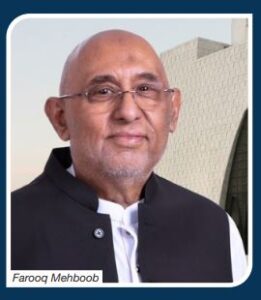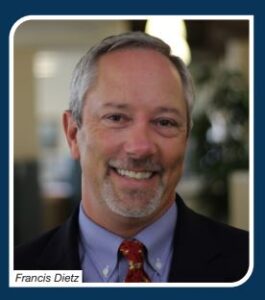With energy prices going up, energy efficiency is on the priority of households in the United States; and the pandemic has driven unparalleled interest in Indoor Environmental Quality, writes Surendar Balakrishnan, Editor, Climate Control Middle East
MICK Schwedler, while speaking to Climate Control Middle East at the end of his term as ASHRAE President (2021-2022), highlighted a quiet revolution sweeping through the HVACR industry in the United States, on the back of demand for greater energy efficiency. “Ten to 15 years ago, people looked at the industry as boring and as just plodding along,” he says. “I have never seen the industry move this fast as it has in the last 2-3 years. We saw ASHRAE President Chuck Gulledge [his
predecessor; 2020-2021 term] talk about data and analytics, and seeing how it invites us to make changes, and we are seeing decarbonisation. Refrigerants are changing, and efficiency of equipment continues to increase. The innovation happening today is extremely high.”
Schwedler says the change that is blowing through the industry is a result of a palpable need for buildings that are more resilient and more sustainable. The owners of the buildings are demanding a reduction in energy use intensity. The push for lower energy use intensity is coming from the residential sector, and the key driver is reduction in total cost of ownership (TCO). Energy efficiency is a top matter of concern in the United States. And the demand for curbing energy use is coming from households. As Francis Dietz, Vice President, Public Affairs at the Air Conditioning, Heating, and Refrigeration Institute (AHRI), puts it, with energy prices going up, energy efficiency is on the priority of households in the United States.

The concern is evident in the retrofit projects in vast swathes of communities across the country. Dr Mark Ereth, Chief Medical Officer, SecureAire Technologies, says half of the projects he is involved in are retrofits. SecureAire provides air purification solutions. Dr Ereth is also Emeritus Professor, Mayo Clinic College of Medicine and Science. Weighing in, Mike Branson, President – Global Air, at Rheem Manufacturing, says that while there was a bit of a slowdown in 2020 on the commercial side, as businesses, in general, remained closed, there has been a lot of activity on new construction and planned retrofits since 2021. Speaking in the context of Rheem, he says: “Seventy+ per cent of both the residential and commercial HVAC industry is tied to retrofit installations. Since this is the majority of the industry, all of our products are designed to provide homeowners and building owners the best solution as they replace their existing equipment.”
Branson is bullish as a manufacturer, despite the talk of a recession in the United States. “As a privately held company, we see a potential recession as a chance to invest in our business for long-term growth,” he says. “For example, we are now launching all new products to meet the new efficiency requirements and expanding our manufacturing facilities.” Branson says Rheem is launching an entirely new residential platform to meet the new efficiency requirements. The new platform, he says, will provide energy-efficient solutions for all sizes of products to allow contractors and homeowners the choices they need to fit their applications. In addition, he says, Rheem is launching new heat pumps that allow for a wider range of installs in all climates.
While regulation is driving manufacturers to innovate and introduce new products in the marketplace, there is hope of the US government acting quickly to align itself more strongly with global climate change action, which in turn, would boost equipment capability, and safeguard and increase their exports. The immediate focus is the Kigali Amendment to the Montreal Protocol, with 2033 being the year when international markets would be restricted from importing equipment from countries that don’t ratify the Amendment.

Branson says he believes that failure to ratify Kigali now could slow the uptake and penetration of US technology in the rapidly growing markets in developing countries. “This is why Rheem is encouraging the US Senate to send the Kigali Amendment to the White House for President Biden’s signature,” he says. “Failure to ratify now will have political and economic impacts and could prevent our ability to achieve manufacturing job growth and other economic benefits that are projected to occur in the next decade in the US, but it does not legally ‘close’ the international markets to US technology at the current time.”
At the time of the interview, Dietz spoke of how AHRI expected the government to act fast on Kigali. “The Kigali Amendment to the Montreal Protocol is poised for action by the United States Senate, having already been approved by the Senate Foreign Relations Committee,” Dietz said. “Its ratification is AHRI’s highest priority, and it is our hope that by the time this is published, it will have been ratified.” He points to how the American Innovation and Manufacturing (AIM) Act, passed by Congress in 2020, is what provided the country’s Environmental Protection Agency the authority to regulate HFCs, and also established the phase- down schedule, which mirrors that contained in the Kigali Amendment.
Hand in hand with energy efficiency is the growing attention for better Indoor Environmental Quality (IEQ) – especially Indoor Air Quality (IAQ) – across the country. Predictably, the pandemic has given the greatest thrust to IAQ efforts. Farooq Mehboob, ASHRAE President for the 2022-2023 term, referring to the pandemic, says it’s unlikely that this era of unpredictability is going away any time soon. “The pandemic has upended our lives and accelerated change in how we live, work, shop and even dress,” he says. “The future does not belong to those who sit and watch. A meaningful and powerful future will not come to us… we must collectively seek it, create it and secure it.”

The biggest push for better IAQ is coming from households in the United States. As Dietz points out, demand is certainly high among households, as during the pandemic, people were home more and had a much greater appreciation for whether their systems worked as well as they would like. “Since most also worked from home, they were always available to meet with contractors instead of having to schedule time in four-hour windows,” he says. “The demand for air filtration grew with the pandemic, so innovations in that area have been a prominent feature in retrofits.”
Echoing this, Branson says: “We were all surprised by the elevated level of demand the industry experienced, as consumers were now working from home. The HVAC industry has continued to see elevated levels of demand since 2020, as consumers renovated and spent money on their homes during the pandemic.” He says that Rheem is continuing to invest in IAQ solutions, controls and higher efficiencies, to stay ahead of the market trends. Since COVID, he says, fresh air, filtration and other IAQ options have become a key focus for commercial buildings.
Dr Ereth seconds Dietz and Branson when he says COVID-19 certainly has forced everyone to think about the air they breathe, which in turn, has helped increase interest and receptivity to air purification. At the same time, employers and workers alike are concerned about IAQ beyond COVID-19, considering that cognitive performance is significantly better when the air we breathe is significantly better, he says. End-users, Dr Ereth says, want the best IAQ with the best energy efficiency. However, he says, many building owners want the cheapest install solution that meets minimum code. “Building codes around IAQ are in flux and highly variable across the United States,” he says. “And frankly, we are seeing unrealistic expectations by some groups, who want all fresh air ventilation at any cost, without regard to bringing in outdoor air pollution – combustion and wildfire smoke – and cost to heat and cool fresh air.”

Dr Ereth says innovation is moving forward quickly and that much of it is around monitoring IAQ. He says that regulations are slowly changing but that almost all focus is on the commissioning state of technology and not whether it meets standards after installation or not. “We really need regulations or monitoring of performance of IAQ solutions months and years after the install,” Dr Ereth says. “There is clearly a decline in performance, but since we generally don’t monitor it, we really don’t know.” There is broad consensus Americans are motivated to fortify their buildings from an IEQ point of view.
At the same time, there is determination not to compromise on the hard-earned advances with regard to greater energy efficiency. ASHRAE is setting the example there with its own headquarters building, in Atlanta, Georgia, which it renovated at a cost of USD 20 million. Mehboob says: “The completion of the project was an important milestone for ASHRAE as a professional society and for the built environment, worldwide. ASHRAE’s investments in energy efficiency and sustainability will boost innovation within the built environment and inspire others to replicate our headquarters’ project model. Our Society reimagined a pathway forward for existing building stock and is pleased to provide an example of the future of high-performance buildings.”
The ASHRAE building, Mehboob says, has a Photovoltaic (PV) solar array system, enabling fully net-zero-energy performance. The PV system, he says, is a combination of three sub-arrays, totalling 332kW, mounted on the rooftop and in an unused section of the parking lot. In addition, the building features a radiant ceiling panel system, which is used for heating and cooling, and a dedicated outdoor air system for outdoor air ventilation with enthalpy heat recovery. It also features an overhead fresh air distribution system, augmented with reversible ceiling fans in the open office areas and with displacement distribution in the learning centre, he says. Further, the building has Demand Control Ventilation (DCV), which is used for high occupancy spaces in the meeting and learning centre, he says.

The common view is that with the technological advances and success stories in multiple applications, the United States has a stronger case than ever before to offer its products and knowhow to a world eager for solutions that can enhance building performance in terms of energy savings and IAQ, among other attributes.
Speaking in the context of the solutions his company offers, Dr Ereth says SecureAire would like to be in the Middle East. “With our superior technology and energy savings, we are a great solution, and we’re looking for a great partner,” he says. “We have the most comprehensive, clinically proven and energy- efficient IAQ technology. We should be a big part of this next wave of air security solutions.
Given the diverse methods of HVAC in the UAE, sometimes compact portable solutions might be better than more extensive or expensive retrofit projects.” Branson says that although the MEA and GCC region markets are still driven by new construction, there is a large and rapidly maturing installed base, as well. “Our strategy, over the last few years, has been to balance our focus between new construction and retrofits,” he says.
Branson points out to how Rheem has been present in the GCC region since the 1980s. He speaks of how the company has continued to accelerate its investments in the region over the last several years, including establishing its regional headquarters with a large team, a new factory and multiple training centres. “The GCC market continues to evolve at a rapid pace with higher efficiency requirements and new technologies,” he says. “We continue to leverage our North American R&D but design for the specific needs of the GCC market. An example of that is our new packaged rooftop factory. The product was designed in the United States, with collaboration from our customers in the GCC and is being built in the GCC. Using technologies that are being used in other markets but optimising it for the GCC market and then manufacturing and developing it further in the region will put a superior and competitive product in the market. As the GCC markets continue to get regulated and put in place a robust auditing process, everybody will get an even playing field.”
Copyright © 2006-2025 - CPI Industry. All rights reserved.